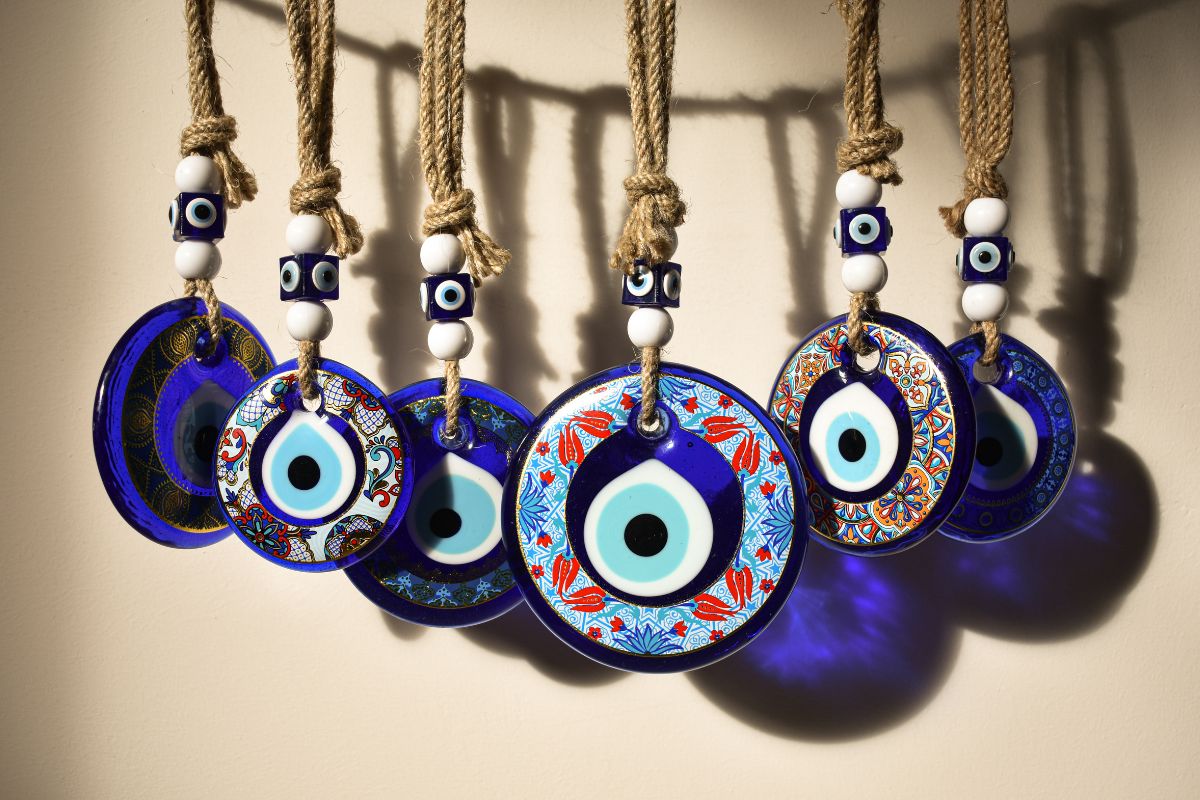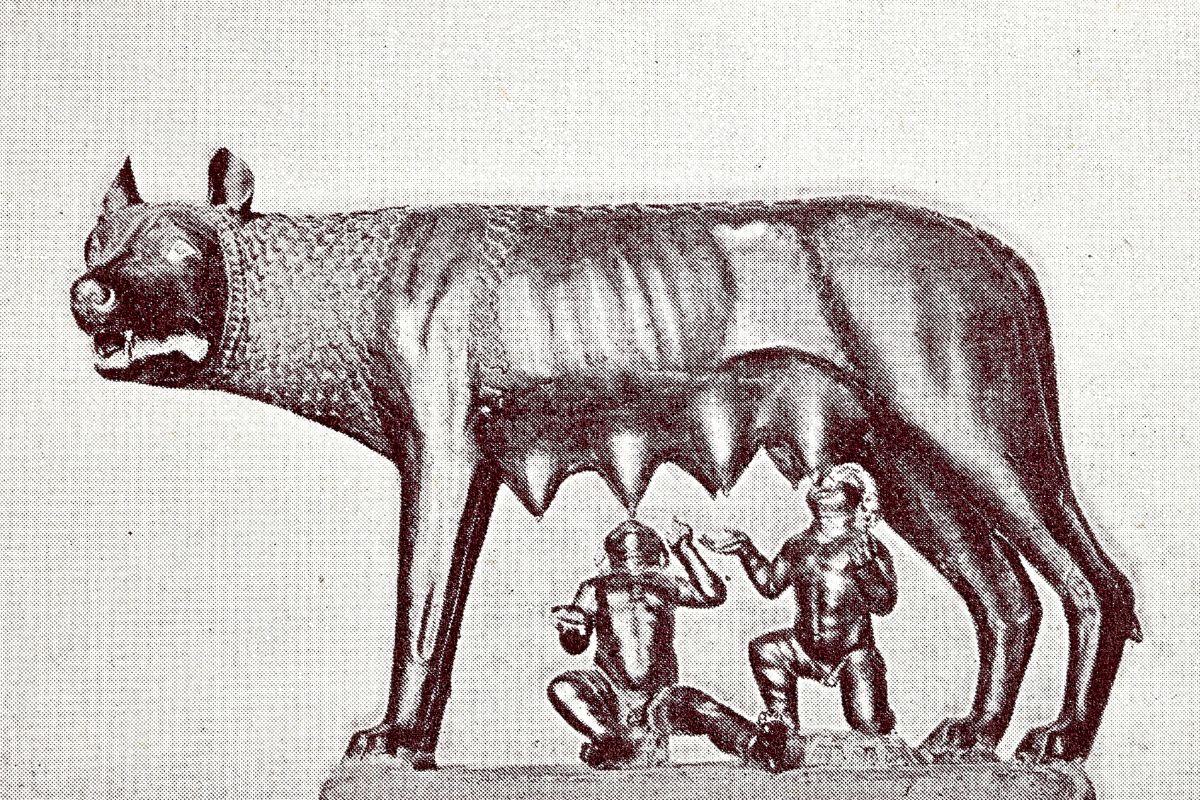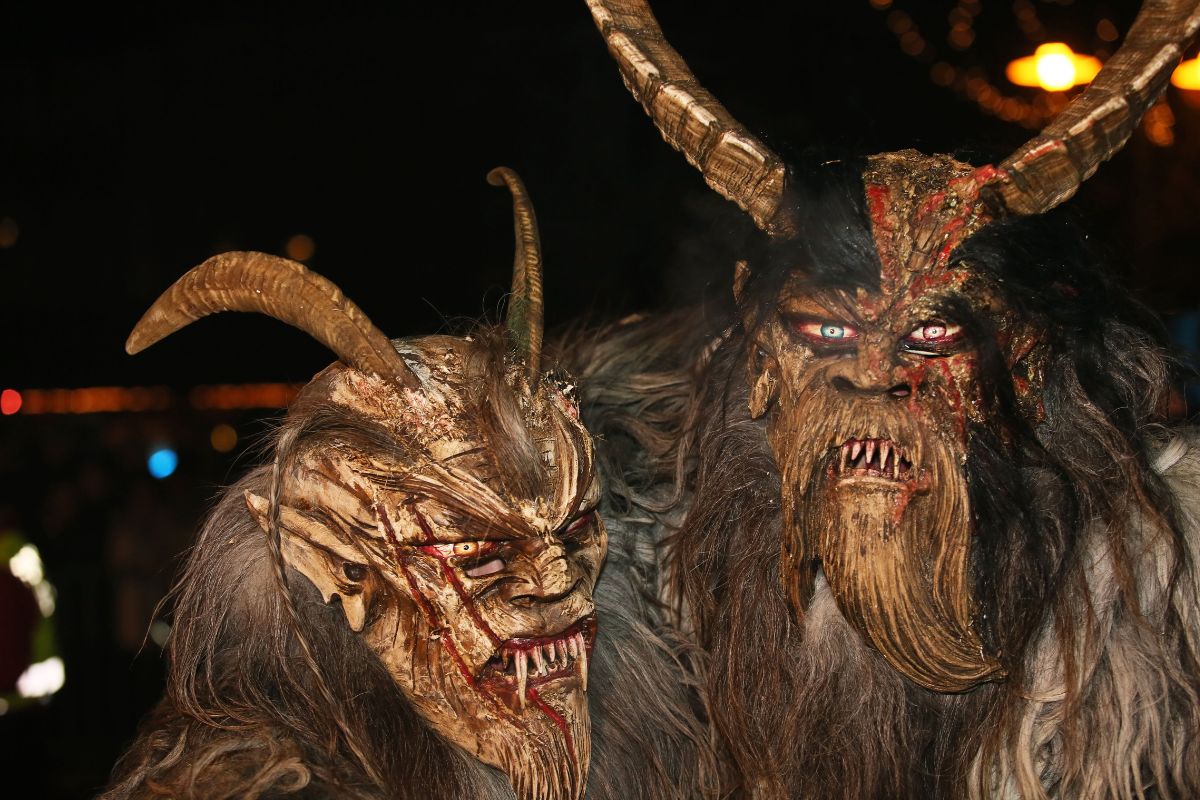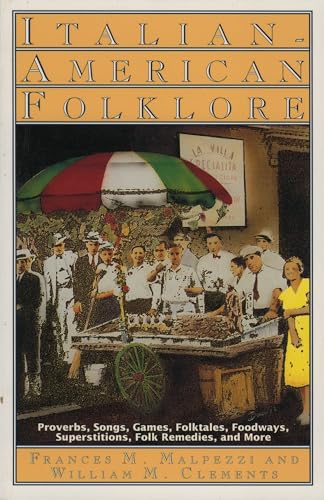Italian Mythology
Notably, Italy has adopted a lot of Greek mythology, including some regarding Italian mythological creatures. For instance, the Roman Gods and Goddesses are essentially Greek and have different names (Diffen, n.d.).
However, one cannot deny that many intriguing, occasionally humorous Italian legends and myths exist.
Let’s explore an introduction to a few Italian mythical creatures.
10 Italian Mythological Creatures
- Lupo Mannaro
Werewolves were popular among the Italian myths long before they were in modern culture. In ancient books, werewolves had a reference and were either described as wolves that behaved like men or as men that could change their skin. Therefore, whether a werewolf was initially an animal or a man was unclear.
However, Italians knew that a werewolf might possess both characteristics and that the transition always occurred at night. They stated that a werewolf could get treated if it had not transformed, and they outlined various treatments.
- Malocchio
The “Evil Eye” is akin to the Malocchio. Even in contemporary Italy, there is a persistent belief in the power of a curse. In some instances, this belief is so strong that people choose not to share good news or information about crucial tests out of fear of being the target of Malocchio. Italians thought that red clothing, even red underwear, might help fight off such bad karma.

- Romulus and Remus
Of course, no discussion of Italian monsters would be complete without a mention of Rome’s founding. Procas, a descendant of the Trojan hero Aeneas, gave birth to Numitor and Amulius in that order somewhere in the ninth century BC. The oldest son, Numitor, succeeded Procas as king of Alba Longa in 794 BC.
Amulius, who was jealous, took the throne forcefully and became the new ruler. Amulius also killed Numitor’s son and made his daughter Rhea Silvia a Vestal Virgin, preventing her from becoming a legitimate heir.
To Amulius’ dismay, Rhea Silvia conceived not of a human man but of the deity Mars, giving birth to twins Romulus and Remus. The twin brothers were either fathered by Hercules (who is well-known as a Greek hero) or by the Roman God Mars (essentially the Greek God of war, Ares, with a different name).
Amulius instructed his troops to drown the twins in the Tiber River. But unknowingly to the king, they just dumped the casket carrying the twins on the bank of the river. A female wolf saved Romulus and Remus and decided to nurture them. A shepherd, Faustulushey, later adopted them.
The twins concluded that Amulius was unfair once they reached adulthood and discovered their true heritage. After killing Amulius, their mother’s father, Numitor, got permission to reclaim his reign. The new city that Romulus and Remus established is now known as Rome. Rome is home to several statues depicting a she-wolf caring for twins.

- The Babau
The character is also the Babau in the Italian version of Nightmare Before Christmas. However, one can also write it as Babao or Baubau.
The Babau is essentially the Italian equivalent of the boogeyman. This enigmatic being is typically a terrible monster without a clear shape or distinctive appearance.
It may be humanoid, but it may also be an animal, as its name may be an Italian onomatopoeia that sounds like a dog barking. In case you were wondering, dogs in Italy speak “Bau” rather than “woof.”
The threat that “I’ll call the Babau if you misbehave!” is frequently used to scare kids into behaving well throughout Italy. All credit goes to the Babau, who has grown to be such a ubiquitous figure in Italian mythology.
- The Befana
A good witch known as The Befana appeared on January 6th night long ago. The church (of course) was not happy with that tale and came up with its explanation, namely that the witch is a spawn of the devil. Some claim that the witch might be living with Santa Claus, while others claim that the witch is a spinster.
Which children does The Befana deem good? It’s those who receive gifts the night the witch shows up. On the other hand, the children who haven’t been so good receive a bit of charcoal.
- The Borda
The Borda is one of the various witch-like characters in Italy. They originate from the central region of Emilia-Romagna. Particularly, The Borda is infamous for its horrifying looks and habit of always donning a blindfold.
This witch shows up around streams and bogs (freshwater wetlands with soft, spongy ground) after dark or on foggy days, dragging anyone who has the misfortune of coming across her.
You can understand how the Borda came to be as the personification of the terror of these places. So, its creation sought specifically to keep youngsters safe. Remember, bogs and canals are one of the most distinguishing aspects of that section of the Po Valley.
- The Dahu
The Dahu is a creature in Northern Italy. The Swiss and French also use the term, maybe because the Dahu is typically associated with the Alps.
The Dahu has characteristics of a goat-like creature, although it has very long legs. It can always walk along the mountain because the two legs facing away from it are often longer than the legs closest to it. Naturally, it can only go in one direction because the varied legs would cause it much trouble otherwise.
Since they are mirror images of one another, the male and female versions are reported to go around the mountain in opposite directions and search for one another. Notably, goats are unusual, but Dahus are even stranger beings. What a surprise that none of them gets caught!
- The Gata Carogna
According to Lombardy mythology, the Gata Carogna, which resembles a large red she-cat with shaggy fur and angry eyes, stalks through the cities of the provinces of Cremona and Bergamo to attack youngsters and steal their souls. You’re probably on the right track if you’re beginning to suspect that most of these animals can keep kids inside and safe.
- The Krampus
The Krampus is undoubtedly one of the most frightful characters among most Italian folklore creatures. It is common throughout the entire Eastern Alpine region. Therefore, you’ll find some of its forms in Austria, Slovenia, Croatia, Hungary, and Germany.
You might be surprised to learn that the Krampus has a stronger connection to Christmas than Halloween, but once December arrives, it prowls the streets.
Legend has it that Bishop Saint Nicholas could expel the Italian demon known as the Krampus. The demon had to serve the saint and travel with the saint wherever he went as a result of that. This move means that the Krampus comes to town around the Saint Nicholas holiday at the start of December and searches for disobedient kids.

- The Lariosauro (Italy’s Nessie)
Watch out for the incredible Lariosauro if you ever visit Lake Como. According to legend, it is a creature that belongs in the lake’s water. But similar to its Scottish relative, lovely Nessie in Loch Ness, no evidence of the Lariosauro’s existence has ever been discovered.
Some believe that a person with a vivid imagination might have merely imagined a really large eel. But who can say?
Three Books on Mythological Creatures to Buy
Authors: DK, Stephen Krensky
Publisher: DK Children
Publication year: October 13, 2020
Format: Hardcover, Kindle
Version: New, used
Number of pages: 160
Age range: 5 to 10 years
Language: English
About This Book
The Book of Mythical Beasts and Magical Creatures contains everything you need to know about large and small mythical creatures.
This children’s mythology book is the only kids’ handbook of magical animals that covers the history behind the mythology in a fun and enlightening way. Thus, it is ideal for Italian Mythology fans.
Given that this book features Greek mythology, you will surely read about several Italian mythical creatures.
Authors: Frances M. Malpezzi, William M. Clements
Publisher: August House
Publication year: December 28, 2005
Format: Hardcover, paperback
Version: New, used
Number of pages: 304
Language: English
Edition: First
About This Book
Notably, one of the biggest ethnic groupings in the US is Italian-Americans. Many of its images depicted in film and fiction focus on stereotypes that are not true of this immigrant and assimilated population.
Notably, Italian-American folklore directly gets its inspiration from Americans of both urban and rural Italian heritage. The end effect is an enjoyable, engaging, and educational book firmly grounded in academia.
The traditions practiced by Italian-Americans appear in chapters on folk speech, superstitions, folk medicine, games, and more. However, the writers also highlight the value of local ties by describing the diversity in regional traditions amongst the Italian regions and how these variations have spread to Italian-American groups.
Indeed, the readers of this collection of Italian folktales will learn the value of compassion, ingenuity, and respect.
Authors: Professor Cristina Mazzoni (Translator)
Publisher: Princeton University Press
Publication year: September 14, 2021
Format: Paperback, Kindle
Version: New, used
Number of pages: 240
Language: English
About This Book
Twenty enchanted tales appear in The Pomegranates and Other Modern Italian Fairy Tales, published between 1875 and 1914 after Italy’s political unification.
Folklorists gathered fairy tales from many parts of the country throughout those turbulent decades of political and social transformation. Also, famous authors created unique stories in standard Italian while drawing inspiration from folktales from the region and translated others from France.
From the works of writers like Carlo Collodi, best known for the book Pinocchio, to Grazia Deledda, the only Italian woman to win the Nobel Prize in literature, this collection includes various delightful gems.
Notably, the themes of transformation unite the stories in this collection. For example, a man transforms into a lion, a dove, and an ant. Also, a handsome adolescent emerges from a pig’s body. Additionally, three lovely women appear from pomegranate rinds.
Also, a thorough introduction by Cristina Mazzoni places the stories in their historical and cultural context. Additionally, the collection includes historical images and author biographies.
Indeed, this book will surprise you with its adventures, supernatural and remarkable events, and brave and flawed heroes.
The End
Obviously, this is only a tiny sample of the broader body of folklore about the Italian mythology creatures. There is much more to discover if you’re interested in learning more about Italy’s traditions, which are made very diverse by its past. Also, Italian traditions frequently differ from town to town within the same region.
References:
Greek gods vs Roman gods – Difference and comparison (n.d.). Diffen. https://www.diffen.com/difference/Greek_Gods_vs_Roman_Gods#:~:text=Although%20Greek%20Gods%20are%20arguably

Community of passionate writers and content creators who share a love for Italian heritage, culture, travel, food, and the Italian-American community. Our mission is to celebrate Italy’s rich history and traditions and connect with others who share the same passion.








